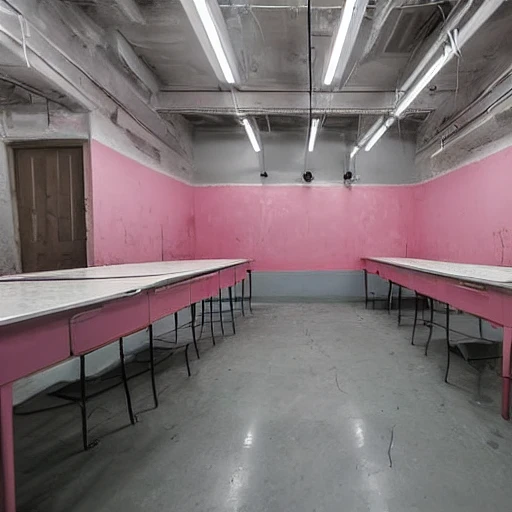
Want to learn how to create images like this one?
Check out our crash course in prompt engineering & AI art generation!
robertdupper
posted over 2 years ago
130 views
0 comments
As you step into the laboratory,
you're immediately transported back in time to the Soviet era.
The walls are a faded shade of gray,
with chipped paint and cracks running through them.
In the center of the room,
a large table dominates the space,
cluttered with petri dishes filled with various shades of pink and red.
Each dish contains a different type of lab-grown meat,
from beef to chicken and even exotic options like kangaroo and alligator.
Despite the outdated decor,
the lab is filled with the latest technology,
from the gleaming stainless steel equipment to the screens displaying complex data in real-time.
Healthy food posters adorn the walls,
showcasing the benefits of consuming lab-grown meat over traditional farming methods.
The posters feature vibrant images of smiling families and happy cows grazing in lush green pastures.
As you move closer to the table,
you notice a picture frame on the wall featuring the Blockrock logo,
one of the leading corporations in the lab-grown meat industry.
Another frame next to it bears the unmistakable Microsoft logo,
hinting at the high-tech nature of the operation.
The petri dish closest to you captures your attention,
revealing a close-up view of a small piece of lab-grown beef.
The meat glistens under the fluorescent lighting,
with intricate patterns and textures resembling those of a natural cut.
Despite its artificial origin,
the meat looks surprisingly appetizing,
and you can't help but wonder what it tastes like.
As you continue to explore the lab,
you notice the intricate systems and processes behind the meat-growing operation.









